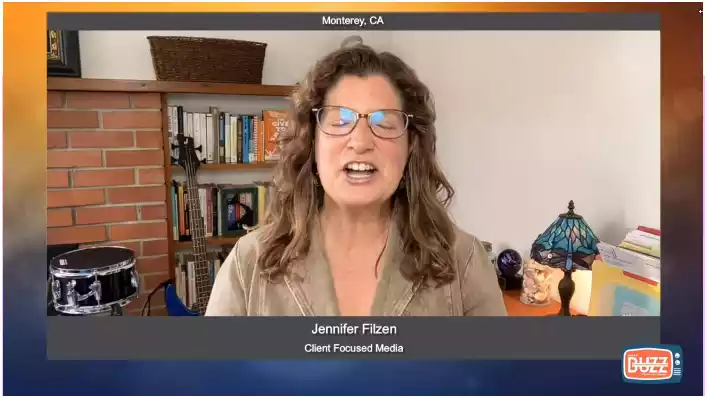Role of Insurance Verification in Preauthorization: Ensuring Smooth Medical Processes
Discover how insurance verification plays a pivotal role of insurance verification in preauthorization processes. Learn the benefits and improve your practice's efficiency. Read more to uncover the details!

Understanding Medicaid prior authorization is crucial for ensuring that healthcare services are covered under Medicaid. Prior authorization is a requirement where Medicaid must approve certain medical services, treatments, or medications before they are provided. This process helps control costs and ensure that the care being provided is medically necessary. Without obtaining prior authorization, services may not be covered, leading to potential out-of-pocket expenses for the patient. It’s important to check the requirements ahead of time to avoid delays or denials in coverage.
Stay ahead!
Table of Contents
Role of Insurance Verification in Preauthorization

The Significance of Insurance Verification in Preauthorization
Insurance verification plays a role in preauthorization by ensuring that healthcare providers and patients understand which services are covered under a patient’s insurance plan. This step is essential because it helps identify any restrictions or exclusions in coverage that could affect a patient’s treatment access. When insurance verification is conducted accurately and promptly, it decreases the chances of claim rejections, which can result in burdens for patients and wasted resources for healthcare facilities.
Furthermore, ensuring insurance verification enhances communication between healthcare providers and patients. Patients can make informed choices regarding their treatment and financial obligations by offering coverage details. This transparency does not foster trust between the provider and the patient. It also promotes adherence to treatment plans as patients are more likely to be involved in their care when they know their financial responsibilities upfront.
Moreover, efficient insurance verification contributes to a workflow in healthcare facilities. When staff can quickly confirm insurance information, tasks are reduced. Allows providers to focus more on patient care than billing issues after services are rendered. This process not only acts as a safety net for practices but also paves the way for better health outcomes by ensuring patients receive timely care without unnecessary delays or unexpected costs.
Impact of Insurance Verification on Patient Care
The impact of insurance verification on patient care significantly influences aspects of the healthcare journey. Insurance verification confirms access to covered benefits and helps patients receive medical interventions. Patients are less likely to encounter treatment delays due to authorization challenges when eligibility and coverage limits are verified. Access to care boosts health outcomes and creates a sense of safety for patients as they navigate their healthcare journey.
Moreover, being aware of coverage limitations allows patients to choose their treatment plans. In cases where coverage is restricted or certain services need approval, patients can explore options with their healthcare providers. This open communication can lead to adjustments in treatment that meet both needs and financial constraints, preventing patients from being surprised by out-of-pocket expenses. Consequently, verifying insurance strengthens the bond between patients and providers by building trust and encouraging patients to take a role in their care.
Furthermore, accurate insurance verification can alleviate anxiety related to billing concerns. Many individuals feel stressed about the burdens associated with medical procedures. By offering clarity on covered services and anticipated costs upfront, healthcare providers can ease some of this anxiety. This transparent approach empowers patients to concentrate on their health rather than worrying about uncertainties, ultimately improving their overall well-being.
Moreover, smoothly handling insurance verification contributes to enhanced care coordination within the healthcare system.
The healthcare team ensures that all members, from staff to practitioners, have access to crucial information regarding a patient’s insurance status. This collaborative approach enables referrals, follow-ups, and appropriate treatment adjustments based on the patient’s coverage. This unity improves outcomes and promotes a patient-centered care culture that prioritizes the patient’s needs and preferences.
Tips for Implementing a Verification Process
Healthcare providers can follow best practices to streamline operations and improve patient care during insurance verification.
Step 1. Invest in Training and Education
A critical step in insurance verification is providing training for staff members. Front office employees should understand insurance plans, including coverage limits, exclusions, and preauthorization documentation requirements. Ongoing education helps keep staff informed about changes in insurance policies and procedures, enabling them to conduct verifications.
Step 2. Use Technology Solutions
Integrating specialized software for insurance verification can significantly boost efficiency. Electronic Health Records (EHR) systems often include features that enable real-time validation of insurance eligibility, reducing errors and time spent contacting insurance companies. By automating verification tasks, healthcare providers can streamline duties and devote more attention to patient care.
Step 3: Establishing Clear Guidelines and Lists
Creating procedures and checklists for the verification process ensures adherence to each step. These guidelines should detail the information for eligibility checks, such as identification particulars, policy numbers, and service dates. Documented procedures minimize errors and promote smoother communication among team members.
Step 4: Promoting Collaboration Across Departments
Insurance verification requires coordination among departments in a healthcare setting, including clinical and billing teams. Encouraging departmental teamwork ensures alignment on patient coverage details and authorization criteria. Regular meetings and open communication channels between these departments help identify obstacles and implement solutions efficiently for a unified approach to patient care.
Step 5: Placing Emphasis on Patient Engagement
Involving patients in the verification process fosters communication and comprehension regarding their insurance benefits.
Before appointments, healthcare providers should remind patients to bring their insurance cards and explain the significance of verifying coverage details. Providers can reduce coverage misunderstandings and alleviate billing-related stress by educating patients about their responsibilities and the verification process.
6. Monitor and Assess the Process

7. Establish a Feedback System
They are setting up a feedback loop to gather insights from staff involved in the verification process. Patients can offer information for ongoing enhancements. Collecting feedback on challenges encountered during verification can assist in refining protocols. They are ensuring that the system evolves to meet patient and provider needs. By implementing these recommended strategies, healthcare providers can develop an effective insurance verification process that streamlines operational workflow and enhances patient care quality and satisfaction.
I'm very thankful for Portiva who I know is looking after my practice while I'm gone the virtual assistants can manage prescription refills, documents they can triage patients and just kind of answer administrative questions and they can handle a lot on their own. But also, they're very good about contacting me if there's any emergency or anything I need to attend to. So I'm very thankful for Portiva they can help almost any provider almost anywhere and it really allows for some good work-life balance as I'm getting to experience right now at my family farm so I'm very thankful for Portiva and I'm very happy to use their services"

Board Certified Family Medicine Physician

Portiva's Virtual Medical Assistant - I have all the support I need. There's somebody checking my email, any patient messages. Patients are still able to schedule and handle any scheduling issues and any kind of billing that needs to still go through. Portiva hands handles it all for me. I have support i have somebody that I can access 24/7 pretty much. It's all very seamless. If somebody has an emergency or needs a medication called in. I know that the va's at portiva will handle that for me.

Board Certified Family Medicine Physician

Conclusion

To learn more about insurance paperwork that can enhance your medical practice. Discover more about Portiva and unlock a world of possibilities by visiting our homepage today!
- Utilizing experts for prior authorization
- Enhancing quality service with prior authorization
- Prior authorization services for mental well-being
- Reducing stress by outsourcing prior authorization
- How interdisciplinary teams are transforming the prior authorization process
- Quality patient care with outsourced prior authorization
- Virtual medical assistants handling precertification
- Systemic efficiency in prior authorization processes
- Exploring the impact of prior authorization on patient care
- Critical role of feedback in the preauthorization process
- The significance of prior approval in today’s healthcare
- Preauthorization outsourcing services
- Empowering patients in healthcare decisions with prior authorization
- Strategies for advocating fair prior authorization policies
- Prior authorization insurance on patient care and accessibility
- Importance of authorization in insurance policies
- Exploring the ethics of prior authorization
- Cutting down on issues with effective preauthorization
- Measuring efficiency with precertification approval time

